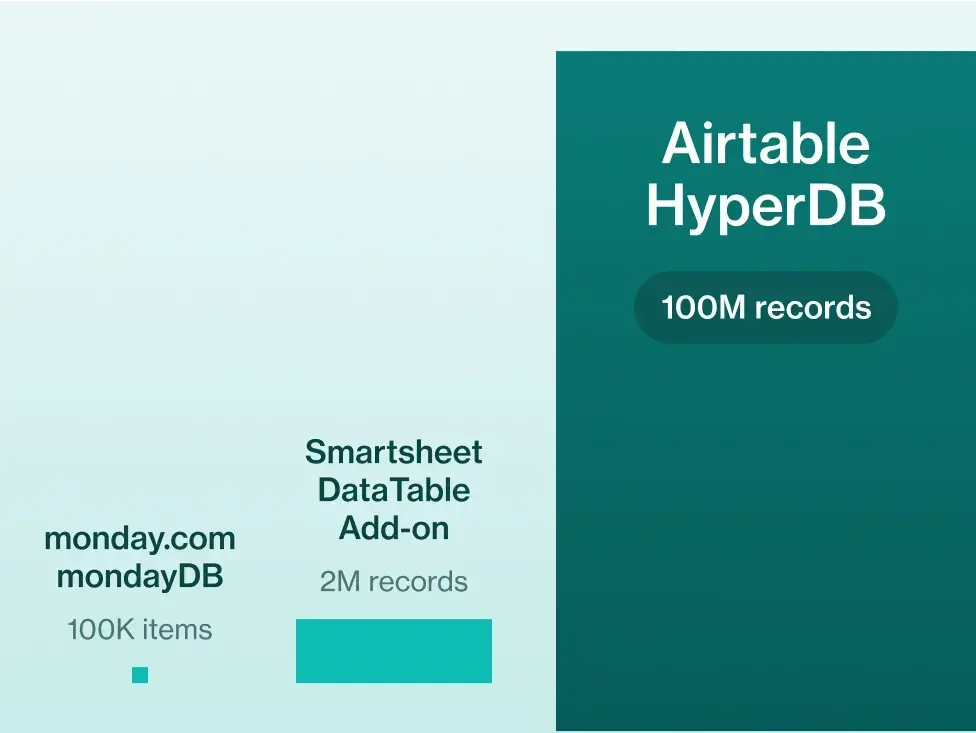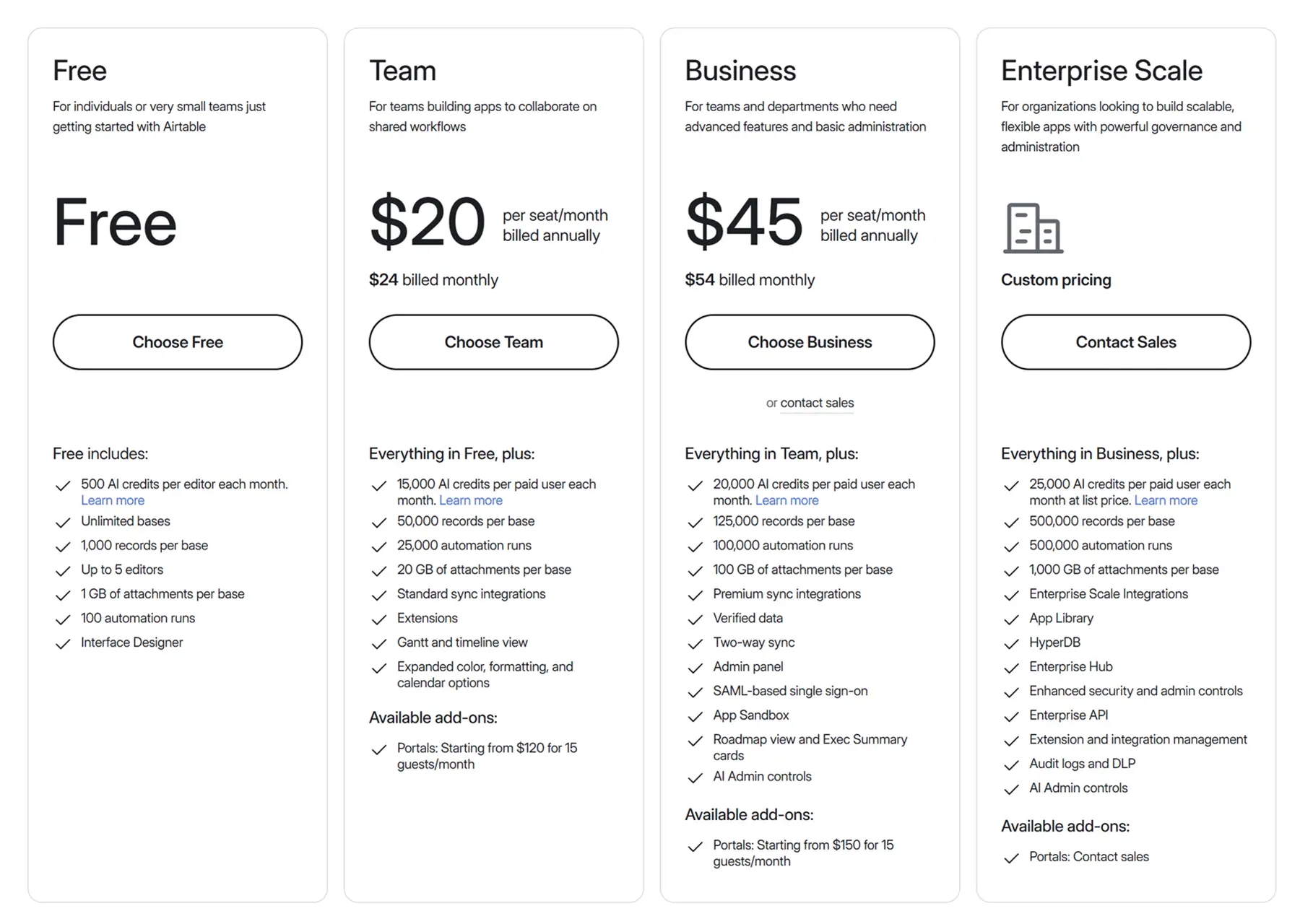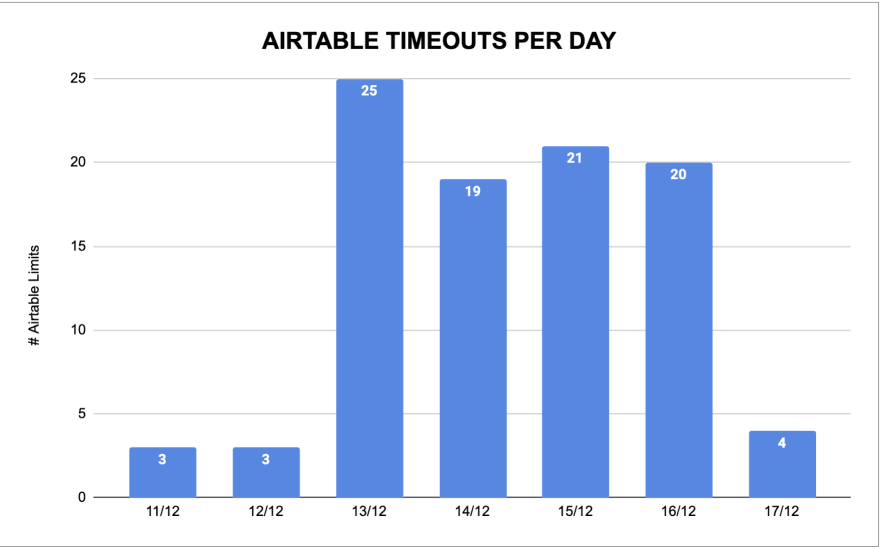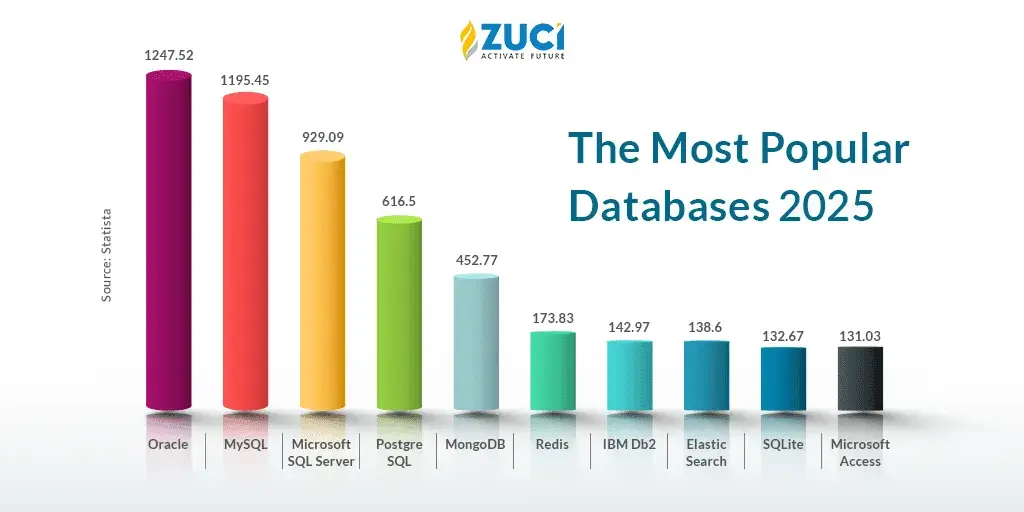
From Black Box to Blueprint: Methods for Exporting Typeform Schemas
September 1, 2025 • 4 min read
CornerUp, a wholesale distributor in New York, was riding high on rapid growth. Their Airtable-powered operations had been handling increasing order volumes beautifully for months.
Then one day, everything stopped working.
"If we got to the automation run limit, and it's kind of difficult to know when you're going to hit it, we just couldn't get any new orders into the system," founder Harrison Azizi explained.
"We were stuck until they renewed all of our automation runs for the next month. We couldn't run the business."
The company had hit Airtable's hard limits, and their success had become their biggest problem.
Orders couldn't enter the system. Customer data stopped syncing. A thriving business was suddenly paralyzed by the very platform that had enabled its growth.
CornerUp's story isn't unique. It's playing out right now across thousands of companies worldwide, from London marketing agencies to San Francisco SaaS startups.
They started with Airtable because it was perfect for their small team. Fast-forward two years, and they're discovering that their growth has backed them into a corner.
Despite all the buzz about Airtable's enterprise features and HyperDB capabilities, the fundamental reality remains unchanged for 90% of users: Team plans are still capped at 50,000 records per base, and the dreaded 500-field limit per table hasn't budged.
The most significant change in 2025? Airtable started strictly enforcing API limits.
As of January 22, 2025, free users face a harsh 1,000 API calls per month, down from previously unlimited usage. Team plan users get 100,000 monthly calls, but that 5 requests per second rate limit remains unchanged across all plans.
For businesses that built their operations around Zapier workflows, Make automations, or custom integrations, this enforcement has been devastating.
One user described their experience: "All our automations broke overnight. Years of carefully built workflows just... stopped working."
When Airtable announced HyperDB in September 2024, promising "100 million records per table," many saw it as the solution to their scaling woes.
The reality is more complex and, frankly, disappointing for most users.
Here's what HyperDB actually does:
It stores your massive dataset (up to 100M records) in a separate storage layer outside your Airtable base. You can then sync filtered subsets of this data into regular Airtable tables.
But here's the catch that Airtable doesn't emphasize: those synced subsets are still limited to 250,000 records per table.
As one frustrated user explained on Airtable's community forum: "The issue is that HyperDB is essentially a sync from a large database into your Airtable base.
You still are restricted to the same record limits per table. You are not able to properly analyze all the data at once."

Airtable's HyperDB comparison with competitors (Source: Airtable)
Think of HyperDB as an expensive data warehouse with a tiny viewing window.
You might have 50 million customer records stored, but you can only work with 250,000 at a time in Airtable.
Need to analyze your entire customer base? You can't. Want to run reports across your complete dataset? Not possible within Airtable's interface.
The pricing makes this even more frustrating: Enterprise Scale plans now cost $60-100 per user monthly, with some organizations reporting annual contracts of $8,000 for just seven users.
For most growing businesses, this represents an impossible choice: pay enterprise prices for limited functionality, or migrate to alternatives that offer better value.
FINN Auto, Germany's car subscription service, represents a typical 2025 migration story.
As their customer base grew, they slammed into Airtable's API limits of 5 requests per second. Their integrations started failing, customer service tickets piled up, and reliable operations became impossible.
"We created an Airtable migration plan and focused on certain topics for investigation earlier before we hit the issues," their engineering team explained.
"But we were not 100% ready when the issue occurred, it took a few weeks to solve the problems."
They ultimately migrated to NocoDB with a PostgreSQL backend, gaining the performance and scalability they needed.
Richard Foxworthy, managing a recurring service business, hit the wall in 2024: "Sadly, I need to migrate away from Airtable due to the lack of a scale plan that makes any sense. We are right up against the 50,000 record limit."
His experience with Airtable support was telling: "The support team actively advised against the Enterprise plan because we only need more records (lots more records!) not more users or more bases."
Enterprise pricing would have cost his small business over $60,000 annually, just to get marginally better record limits that they'd outgrow within months.

Airtable pricing chart as of September 2025
Multiple businesses report similar patterns: initial success with Airtable, rapid growth, then a sudden collision with hard platform limits that force expensive emergency migrations.
Even users who don't hit record limits face performance problems that have plagued Airtable for years.
Community forums reveal widespread complaints about bases becoming "unusably slow" with complex calculations, often hanging at "saving" status for minutes.
Performance degradation typically begins around 20,000 records, particularly when using lookup fields, rollups, and formulas.
Airtable's own troubleshooting guide, updated December 17, 2024, recommends replacing NOW() functions with TODAY() and reducing API request frequency to improve performance.
Users report "erratic" behavior where the same base runs quickly one day and slowly the next, with no apparent changes.
The mobile app struggles with any substantial data volume, and Safari users frequently abandon the platform due to poor optimization for non-Chrome browsers.
Airtable experienced several significant outages in 2024-2025, including a major incident on September 25, 2025, lasting approximately 2.5 hours where users received "This base is temporarily unavailable" error messages.
StatusGator has tracked over 143 outages since August 2020, with Airtable averaging 1.3 incidents per month and 3 hours 32 minutes of downtime per incident.
While no major data loss events occurred, the frequency of disruptions has driven users to implement third-party backup solutions.

Airtable timeouts per day from December, 2021 (Source: FINN)
Airtable's 2024-2025 pricing increases have been dramatic: the Team plan jumped 67% from $12 to $20 per user monthly, while the Business plan soared 87.5% from $24 to $45.
These increases, combined with tighter limits on free plans, have created what users describe as a "bait and switch" situation.
Compare this to alternatives: Baserow offers 100,000 records at $20 per user monthly (versus Airtable's Business plan at $45 for 125,000 records).
The pricing differential represents a 125% premium for marginally more capacity.
As one Reddit user summarized: "I'm paying more for limits that actively constrain my business growth. It feels like being punished for success."
CornerUp's migration to PostgreSQL resulted in dramatic improvements.
Founder Harrison Azizi reported a "10x increase in experimentation velocity" after eliminating per-user licensing costs and gaining complete control over data architecture.
"The fact that we can just plug in our live data and do anything we want means we can now ship things much quicker with stability and good infrastructure. I wish we did it sooner," Azizi reflected.
Migration destinations vary by use case, but common choices include:

Most popular database solutions in 2025 (Source: Zuci)
Airtable has made a strategic choice to focus on enterprise customers while restricting features for smaller users.
HyperDB, despite its impressive marketing, doesn't solve the core limitations that affect 90% of users.
The platform works well for small teams managing under 20,000 records, but becomes increasingly problematic as data volumes grow.
For businesses evaluating platforms in 2025, the research is clear: Airtable may no longer be the optimal choice for rapidly scaling organizations unless they can justify enterprise-level investment from day one.
The gap between Team and Enterprise pricing, combined with persistent performance issues and recent service disruptions, suggests that Airtable is pricing out the very users who made it successful.
The companies thriving long-term are those who recognize Airtable's role as a stepping stone, not a permanent foundation.
They plan their migrations before hitting the walls, avoid the emergency situations that multiply costs, and emerge stronger with platforms designed for their actual scale.
As one migration consultant put it: "The question isn't whether you'll outgrow Airtable. It's whether you'll plan the transition or let the limits force an emergency migration that costs 10x more and disrupts your entire operation."
Subscribe to our newsletter to receive the latest news from SaaS, tips, tricks and insights directly to your inbox.
